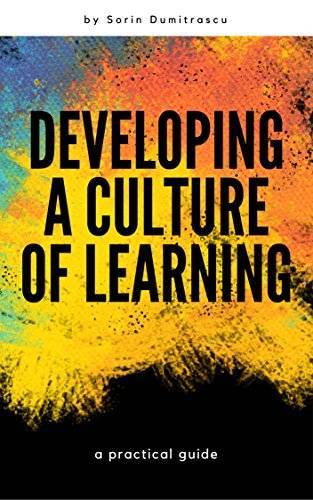

Developing a Culture of Learning: A Practical Guide
by Sorin Dumitrascu
Organizations have always had the capacity to evolve. However, today they need to evolve even more quickly and intelligently to sustain their competitive advantage. Market conditions and customer demands are constantly changing, and if organizations can anticipate and make the most of new opportunities, they'll be more likely to survive and prosper in the future. In a dynamic business environment, organizational leaders must make learning a cornerstone of their organization's culture.
So how can you tell if your organization is adequately prepared to meet such rapidly changing demands? In this course you'll learn how to assess the strength of your organization's learning culture. First, you'll find out what organizational learning really is, and how it encompasses much more than traditional "training."
You'll discover how training, knowledge management, and technology are all critical tools that support an organization's ability to learn. Organizations also need the key elements of a learning culture: holistic thinking, integrated learning opportunities, a capacity for change and improvement, a focus on collaboration, and personal commitment from employees. It's in evaluating these key elements that you'll learn how to assess the strength of your own organization's learning culture.
*
If learning is so beneficial, why do some people have difficulty? The answer lies partly in workplace distractions. The demands on people's time and the speed of events make it difficult for them to recognize and assimilate new information.
Organizations that want to adapt to changing business environments need to foster a learning culture. Even the best training environment won't enable learning if people don't take the time to process information and learn. A learning culture reflects the organizational beliefs and practices that encourage continuous development. People who work in such a culture embrace continuous self-development and seek to learn and grow.
There are obstacles to learning that you, as a manager and leader, need to overcome. Some organizational structures and cultures present obstacles such as hierarchical thinking and isolation. Hierarchical thinking – where leaders are the thinkers and employees are the doers – stifles learning by making nonmanagers feel their ideas aren't valued. Isolation limits interaction between people who have different perspectives, thus limiting their opportunity to learn.
This course will provide tools for overcoming these obstacles and for creating five key conditions that allow a learning culture to flourish. Consider the first four conditions:
•the freedom to explore others' thoughts, opinions, and actions,
•a habit of reflection, inquiry, and objectivity,
•egalitarian relationships that promote power sharing and responsibility at all levels, and
•collaborative practices that encourage people to share information and learning experiences.
The fifth and most important condition supporting a learning culture is motivation for learning and growth. Motivation is important because organizational learning is mostly self-directed. This means that people take responsibility for their own learning. Motivated employees are more creative and they're more committed to learning and being productive. Establishing these conditions will help to promote a learning culture in your organization.
So how can you tell if your organization is adequately prepared to meet such rapidly changing demands? In this course you'll learn how to assess the strength of your organization's learning culture. First, you'll find out what organizational learning really is, and how it encompasses much more than traditional "training."
You'll discover how training, knowledge management, and technology are all critical tools that support an organization's ability to learn. Organizations also need the key elements of a learning culture: holistic thinking, integrated learning opportunities, a capacity for change and improvement, a focus on collaboration, and personal commitment from employees. It's in evaluating these key elements that you'll learn how to assess the strength of your own organization's learning culture.
*
If learning is so beneficial, why do some people have difficulty? The answer lies partly in workplace distractions. The demands on people's time and the speed of events make it difficult for them to recognize and assimilate new information.
Organizations that want to adapt to changing business environments need to foster a learning culture. Even the best training environment won't enable learning if people don't take the time to process information and learn. A learning culture reflects the organizational beliefs and practices that encourage continuous development. People who work in such a culture embrace continuous self-development and seek to learn and grow.
There are obstacles to learning that you, as a manager and leader, need to overcome. Some organizational structures and cultures present obstacles such as hierarchical thinking and isolation. Hierarchical thinking – where leaders are the thinkers and employees are the doers – stifles learning by making nonmanagers feel their ideas aren't valued. Isolation limits interaction between people who have different perspectives, thus limiting their opportunity to learn.
This course will provide tools for overcoming these obstacles and for creating five key conditions that allow a learning culture to flourish. Consider the first four conditions:
•the freedom to explore others' thoughts, opinions, and actions,
•a habit of reflection, inquiry, and objectivity,
•egalitarian relationships that promote power sharing and responsibility at all levels, and
•collaborative practices that encourage people to share information and learning experiences.
The fifth and most important condition supporting a learning culture is motivation for learning and growth. Motivation is important because organizational learning is mostly self-directed. This means that people take responsibility for their own learning. Motivated employees are more creative and they're more committed to learning and being productive. Establishing these conditions will help to promote a learning culture in your organization.

